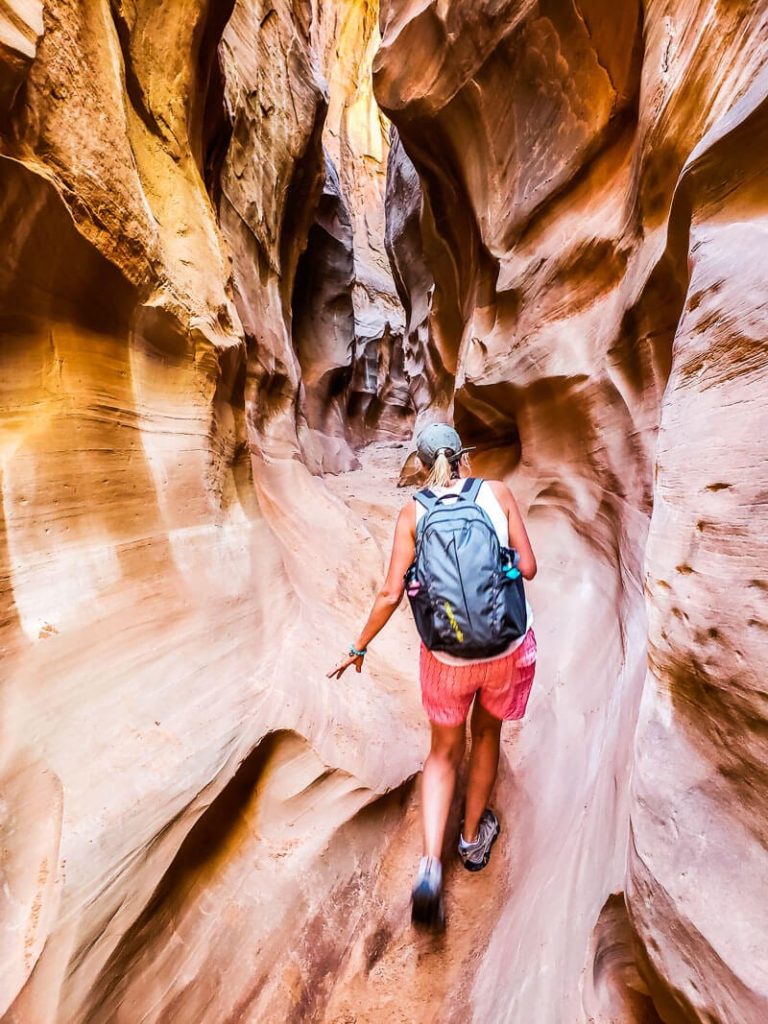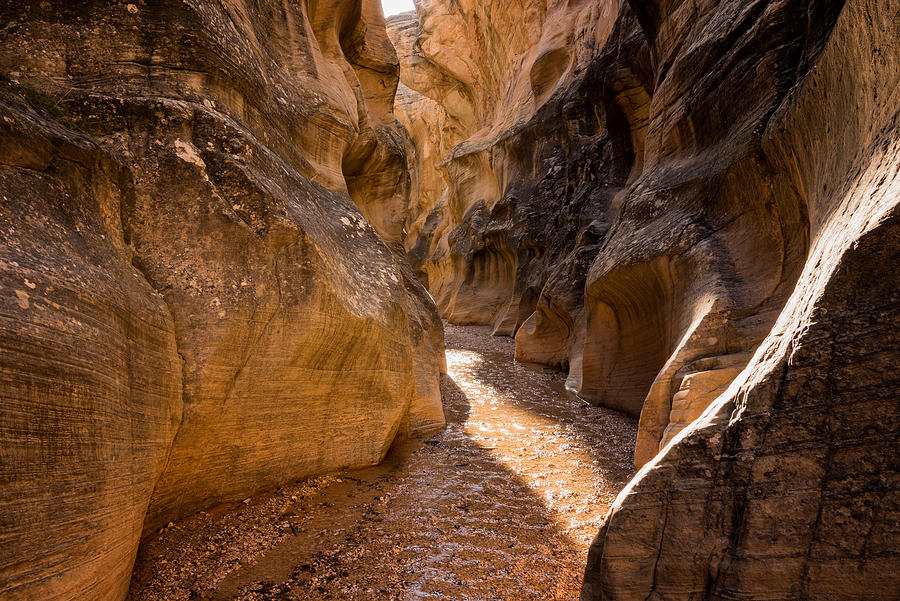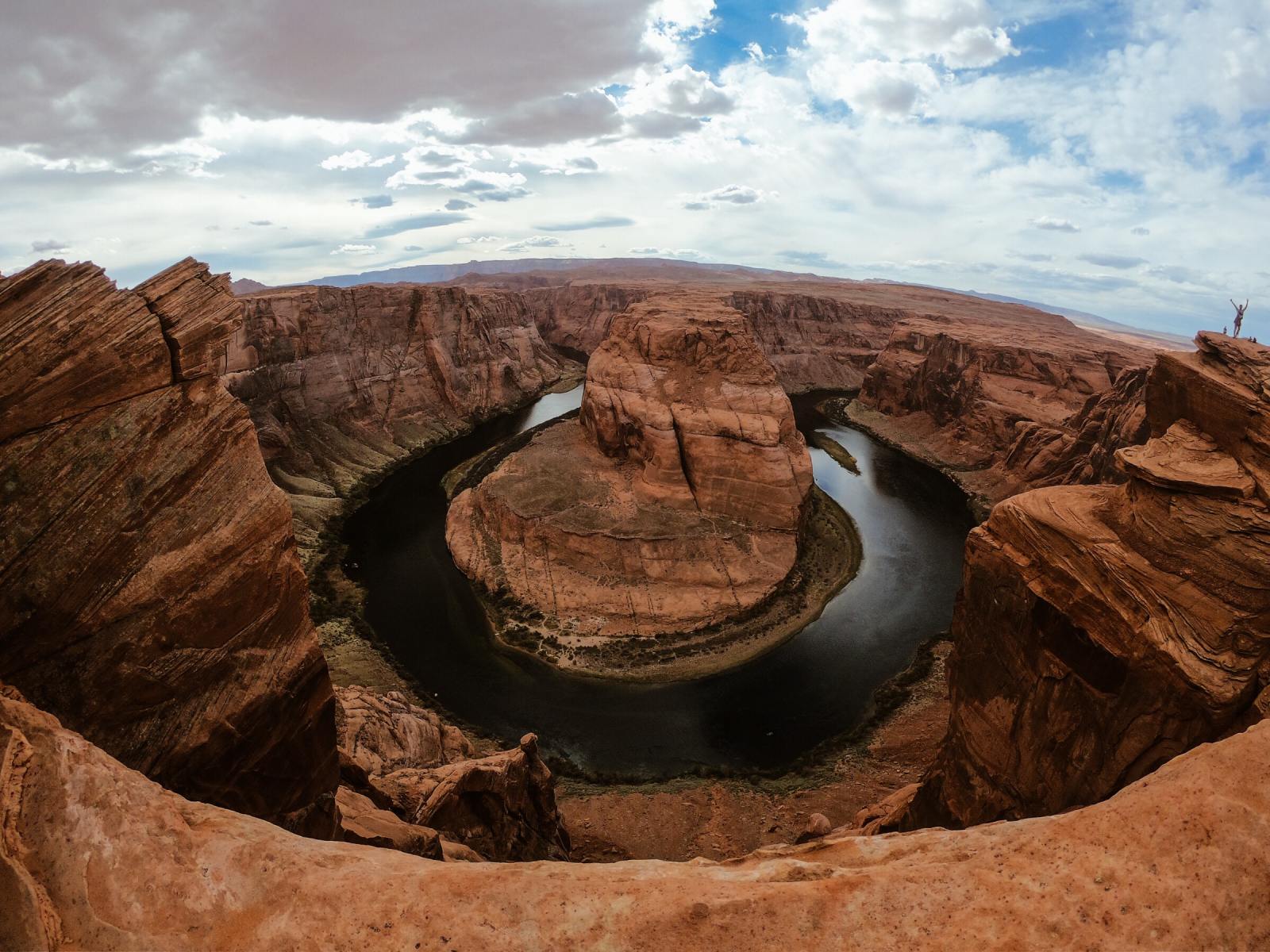Grand Canyon Slot

by 'Canyon Dave' Thayer
The details of the life of Nothrotheriops in this story are based on knowledge gained from study of the Shasta ground sloth’s skeleton, preserved fur, and dung (showing what he ate). It is also possible to extrapolate his basic habits and physiology by comparison with his nearest living relatives, the tree sloths of South America. To give comments on this story, visit our grand canyon tours site and email Dave.
Living and working in the Grand Circle of Northern Arizona, with the Grand Canyon, Monument Valley, Horseshoe Bend and numerous Slot Canyons as our back yard we feel truly blessed to be able to be a part of your special day. Horseshoe Bend located just outside of the small city of Page, AZ and is an amazing location for a celebration of love.
For more information on canyoneering in the park’s slot canyons, consult Todd Martin’s “Grand Canyoneering: Exploring the Rugged Gorges and Secret Slots of the Grand Canyon.” 55. This epic trip is hard, dry, steep-and gorgeous. The Cranberry Route-the final leg of this challenging loop-is the boldest, hardest scramble our scouts have done in the Grand Canyon. Study the key steps of this eight-mile section and see more details a. Living and working in the Grand Circle of Northern Arizona, with the Grand Canyon, Monument Valley, Horseshoe Bend and numerous Slot Canyons as our back yard we feel truly blessed to be able to be a part of your special day. Horseshoe Bend located just outside of the small city of Page, AZ and is an amazing location for a celebration of love.
In the Rain
Twelve thousand years ago, an ice age was ending. It was late summer, rain streaming down. The southwest monsoon had returned after almost 100,000 years. Nothrotheriops shastensis, the ground sloth, stood in the entrance of a cave that opened onto the Tonto Platform from the base of the Redwall cliff. A puddle was filling from a steady drip in the ceiling. Nothrotheriops looked out disinterestedly at the overcast day, cool after a hot summer.
The sun had peeked out between thunderheads. Swirling sheets of rain in the dark distance became individual falling diamonds in the sunny foreground, and all the rocks and cliffs were wet and glistening. The cave was a shelter, and its entrance room a gigantic brood chamber for the local sloth population. Mountain goats sometimes shared the shelter, which felt warm in the winter, cool in the summer, and always dim and comforting. The floor was soft with thousands of years of pungent dung-balls.
Nothrotheriops was old for a ground sloth, slower-moving even than most of his slow tribe. He was about eight feet long with his sturdy tail, and he weighed 400 pounds. He was an herbivore. Right now his long tongue was sliding in and out as he tasted his mouthful of bitter joint-fir. He was always chewing, or waddling to his browse, or sleeping. Being a sloth, with a naturally slow metabolism, he was unruffled by the ephedra’s heart-stimulating chemistry. Nothrotheriops was a primitive beast related to anteaters and armadillos, members of the Order Xenarthra, which have a reduced number of teeth.

Lunchtime
Nothrotheriops was quite safe, the largest animal within Grand Canyon—contemporaneous mammoths and giant sloths were not gravimetrically designed for the steep terrain. The mammoth’s chief predator, the saber-toothed cat, was absent as well. While a desperate mountain lion might attack the old sloth, few predators would eat flesh of such a strong odor. Also, Nothrotheriops had formidable claws on its front feet whose slashes could send any cat running, or dying.
The rain poured down, bouncing from the stones and creating a rising mist. Across the Tonto Platform, pinyon (Pinus edulis) and juniper (Juniperus osteosperma) trees were winter-pruned to the exact height of Nothrotheriops on his back feet with his long neck stretched out. The underbrush, which he also browsed, was ephedra, yucca, cacti, grasses, and numerous flowering shrubs and herbaceous plants.
He felt hungry, as he usually did while awake. His primitive digestive system was relatively ineffective, requiring him to eat proportionally more forage than the advanced mammals of his world. This took time, and he didn’t have much of that, since he required many hours of sleep each day and night. So, walking on his front knuckles and the outside edges of his hind feet, he ambled down the slope to eat.
Rivulets of rainwater were soon running down his reddish-brown fur. Between tree trunks, he could see the dark shapes of seven more sloths, four of them pregnant females. Modern female tree sloths, and so perhaps Nothrotheriops, give birth annually, and so they are pregnant for most of the year, often with a young sloth clinging to their fur. The female will abandon these in a few months, when they are big enough to fend for themselves.
Sleepy
Nothrotheriops stopped at a barberry bush (Berberis fremontii) that still had its dark blue berries. He ate the berries and all the youngest foliage he could find. The leaves were prickly and a little too tough for his few worn teeth. Perezia (Acourtia wrightii) and verbena (Verbena macdougalii) grew nearby. Using his prehensile lips, he plucked some of these up before his attention turned to a nice joint-fir (Ephedra viridis), one of his favorites.
He didn’t mind the rain as long as his body temperature was right. Sloths do not have an efficient temperature regulation system. Was his inability to regulate his internal temperature the cause of his extinction, and all his kind, as the climate warmed and then froze again? Or was it the Clovis people, 12,000 years ago, with their long spears, their fire, and their advanced hunting technology?
Perhaps both climate and humans can share the blame for Nothrotheriops’ obliteration in another thousand years, but Nothrotheriops didn’t know about such things. His feet hurt from his advancing arthritis in the rainy weather, and anyway he felt sleepy, so he returned to his cave for a nap. He paused on the way for a long drink from a stream where fresh rainwater splashed over a rock into a pool. He entered the cave and settled down in the soft, pungent dung blanket. Paleontologists would awaken him in Rampart Cave, in western Grand Canyon, in twelve thousand years.
Visit Canyon Dave's Grand Canyon Tour site here.

Grand Canyon Slot Canyon
When hiking, always be aware of your surroundings and current weather conditions.Don't be so committed to your hike that you refuse to recognize a dangerous situation. Northern Arizona is an incredibly diverse area with may things to do and see. When weather threatens, postponing your hike for a day or two and finding something else to do is a wise decision that could save your life. Be willing to change your plans.
Average Temperatures in the Inner Canyon
| JAN | FEB | MAR | APR | MAY | JUN | JUL | AUG | SEP | OCT | NOV | DEC | |
| High (F) | 56 | 62 | 71 | 82 | 92 | 101 | 106 | 103 | 97 | 84 | 68 | 57 |
| Low (F) | 36 | 42 | 48 | 56 | 63 | 72 | 78 | 75 | 69 | 58 | 46 | 37 |
| High (C) | 13 | 17 | 22 | 28 | 33 | 38 | 41 | 39 | 36 | 29 | 20 | 14 |
| Low (C) | 2 | 6 | 9 | 13 | 17 | 22 | 26 | 24 | 21 | 14 | 8 | 2 |
.
Before you begin any hike ALWAYS CHECK THE WEATHER FORECAST. Watch continually for changing weather conditions during your hike. Average temperatures, weather information, and road conditions can be found on the Weather Conditions page.
The National Park Service urges SPECIAL CAUTION for all hikers during the summer months. Daytime highs can potentially top 120F. These temperatures are beyond unpleasant or uncomfortable-they are, in fact, dangerous and if you fail to factor the heat into your plans the results could be tragic. Visit Summer Hiking - Hike Smart for more info.